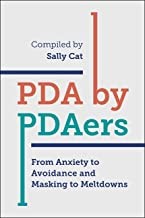News
What is Pathological Demand Avoidance (PDA)?

Context
At Therapy Partners in our private practice, we often support individuals struggling with ADHD (attention deficit hyperactivity disorder) and its various subtypes. One such subtype is the Pathological Demand Avoidance (PDA). PDA is characterised by an extreme resistance to everyday demands, leading to avoidance, anxiety, and other negative consequences. In this blog, we will discuss PDA in ADHD, its symptoms, prevalence, and potential interventions. This avoidance behaviour is not a deliberate attempt to defy or manipulate others but instead is an overwhelming anxiety response to feeling controlled or restricted. People with PDA often have difficulty with social communication, emotional regulation, and flexible thinking, which can lead to significant challenges in daily life.
Symptoms of PDA in ADHD
Individuals with ADHD and PDA show a unique set of symptoms that distinguish them from those with typical ADHD. The Diagnostic and Statistical Manual of Mental Disorders (DSM-5) describes PDA as "an extreme form of oppositional behaviour in which the individual actively avoids everyday demands and expectations." The National Institute for Health and Care Excellence (NICE) guidelines classes PDA as a valid presentation of ADHD.
Symptoms of PDA include:
- Resistance and avoidance of demands – Clients with PDA avoid everyday demands and may display extreme resistance to them. This can include avoiding tasks, refusing to follow rules or instructions, and being argumentative.
- Social anxiety – Clients may have significant social anxiety and difficulty initiating and maintaining social relationships.
- Control issues – Clients may exhibit controlling behaviour, including a need to be in control of situations and other people.
- Sensory issues - PDA may also create sensory processing issues, including an intolerance to certain noises or textures.
Prevalence of PDA in ADHD
The exact prevalence of PDA in ADHD is not known, but it is estimated that around 30% of individuals with ADHD may have PDA. This is based on a study of children with ADHD that found 31% of those assessed showed symptoms of PDA (O'Nions et al., 2016).
Research on PDA is still in its early stages, but there is growing evidence to suggest that it is distinct from other subtypes of ADHD in terms of clinical presentation, cognitive profile, and response to treatment. Research also indicates that PDA is more common in females with ADHD than males. A study conducted in the UK found that of the children with ADHD who met the criteria for PDA, 69% were female (Gillberg et al., 2015).
Individuals with PDA have been found to have more severe impairments in social communication and interaction than those with other ADHD subtypes (O'Nions et al., 2018). Moreover, individuals with PDA may have a unique cognitive profile that includes strengths in creativity and imagination but deficits in executive functioning and theory of mind (Green et al., 2016).
Interventions for PDA in ADHD
There are currently no specific treatments for PDA, and the most effective interventions are likely to be individualised and tailored to the individual's specific needs. However, some general principles of treatment that may be helpful for individuals with PDA include reducing demands, providing structure and routine, and using strategies to enhance emotional regulation and social communication (Christie et al., 2012).
Treatment Plans
Treatment for PDA in ADHD can be challenging, and a multidisciplinary approach is often required. Cognitive-behavioral therapy (CBT) and behavioral interventions are often used, and medication may also be prescribed in some cases.
The use of medication in treating PDA in ADHD is still under investigation. However, recent studies have found that certain medications, such as atomoxetine, may be effective in reducing symptoms of PDA in ADHD (O'Nions et al., 2018).
It is essential to work with a trained mental health professional who has experience in treating individuals with ADHD and PDA. They can help individuals develop coping strategies and provide support for both the individual and their families.
Conclusion
PDA is an important and emerging subtype of ADHD that requires greater attention and understanding from clinicians and researchers. It can cause significant difficulties for individuals and their families, and more research is needed to fully understand the clinical presentation and cognitive profile of PDA.
There is growing evidence to suggest that it is a distinct and debilitating condition that requires tailored interventions and support.
By working with a trained mental health professional, individuals with ADHD and PDA can develop coping strategies and lead more fulfilling lives. Contact us at Therapy and Counselling in Maidstone Kent | Therapy Partners
References:
Christie, P., Duncan, H., & McConnell, D. (2012). Outcome of an education-based intervention for children with pathological demand avoidance. Educational Psychology in Practice, 28(4), 399-414.
Gillberg, C., Fernell, E., Hedvall, Å., & Westerlund, J. (2015). Early diagnosis of autism and impact on prognosis: A narrative review. Clinical Epidemiology, 7, 33-43.
Green, J., Gilchrist, A., Burton, D., & Cox, A. (2016). Social communication profiles of children with pathological demand avoidance syndrome. Autism, 20(7), 899-907.
O'Nions, E., Gould, J., Christie, P., Gillberg, C., & Viding, E. (2018). Identifying features of pathological demand avoidance using the Diagnostic Interview for Social and Communication Disorders (DISCO). European Child & Adolescent Psychiatry, 27(1), 85-93.
Useful resources
BMJ Article (2003)
National Autistic Society
Pathological Demand Avoidance (PDA) (autism.org.uk)
Suggested reading:



